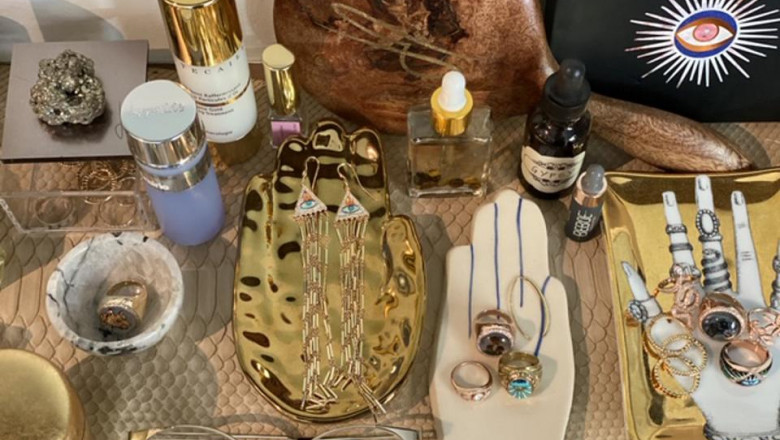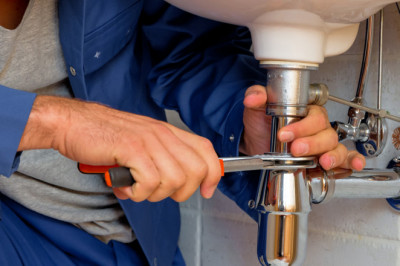views

Jewelry is a great way to express your style and personality, and it can be a lot of fun to wear. However, if you don't take care of your jewelry properly, it will quickly lose its luster and beauty. That's why it's essential to know how to clean and maintain your jewelry to keep it looking its best for years to come.
This blog post will share our top seven tips for maintaining your jewelry to look as good as new every day.
1. Keep Your Jewelry Separate
Keeping your jewelry in a different place from other items is one of the best ways to avoid damaging it. When jewelry is stored together, it's likely to rattle around, causing wear and tear.
If you don't have a designated place for all of your jewelry, try using different boxes or drawers for different types of jewelry. For example, put rings in one box and necklaces in another.
When you're going out, use separate pockets in purses or handbags for each piece of jewelry. This prevents them from rubbing against other objects like keys and pens in your purse.
You can also invest in a jewelry box with compartments for each piece of jewelry. This will help you organize your jewelry pieces and avoid a tangled mess. Jewelry tangling can lead to broken chains, lost earrings, and other problems.
2. Remove Rings Before Washing Hands
This one may seem obvious, but it's essential. Washing hands with rings on can result in scratches on the stone or metal of the ring. This is especially true if you use exfoliating gloves or use harsh soaps.
In addition to removing your rings before washing hands, you should also take off any other metal accessories at least once a day. This includes watches, bracelets, and necklaces.
Here's why:
-
Water damage can cause oxidation (whereby the metal turns green) or tarnish.
-
Chemicals such as chlorine or bleach can cause discoloration in silver items.
-
Heat is another culprit when it comes to damaging jewelry. This could be caused by putting hot pots on top of them while cooking.
You should also avoid wearing your jewelry when swimming or showering. The same goes for exposing it to other chemicals like chlorine and salt water.
3. Clean Your Diamond Ring Regularly
Always clean your diamond ring using a soft or microfiber cloth before wearing them daily. This process will remove any dirt on the surface of the diamond to keep it shiny.
After cleaning your ring every day, do a thorough cleaning every few weeks. Avoid harsh chemicals like bleach or ammonia because they damage the finish on your ring over time.
Instead, use warm water with dish soap or baking soda to clean off all the dust and grime accumulated on your ring.
The cleaning agent you use on your diamond ring also depends on the diamond type. For example, you should use a jewelry cleaner and polishing cloth to clean lab-grown diamond engagement rings. Because they are grown in a controlled environment, lab-grown diamonds are more likely to be free of impurities than their mined counterparts.
Once you've cleaned off any dirt or grime from your ring, dry it off with a soft cloth before storing it away for safekeeping until your subsequent use.
4. Check Jewelry Clasps Often
Clasps hold your jewelry together, a common place for damage. You should check the tightness of all grips on your jewelry. Ensure they're secure and in good condition before putting on jewelry with a clasp.
Like clothing or shoes, they need to be adjusted to fit securely. Jewelry with a loose clasp could fall off and get lost. It may also cause damage to your jewelry and even cause injury if it gets caught on something.
Look at the clasps on your necklaces, bracelets, and rings to ensure they're secure. If you notice any looseness in the grip, take it off and have a jeweler tighten it.
5. Check for Wear and Tear Regularly
Jewelry is a delicate accessory. It's essential to keep an eye on your precious pieces and make sure they're in good condition. You should check for loose stones, discoloration, tarnishing, and signs of wear and damage at least once a month.
If you notice any of the following issues with your jewelry, take it in for repair or replacement as soon as possible:
-
Broken Chains - If a chain breaks or falls off, get it fixed immediately to avoid losing any beads. You can also add a clasp if there isn't one already in place.
-
Loose Beads or Stones - If any of the beads are rattling around in their setting or have fallen out entirely, they are more likely to break when wearing or storing the piece.
-
Stains or Rubbing - Any colors on your jewelry can indicate damage underneath the surface. Similarly, heavy rubbing against other pieces may cause scratches on their surface, affecting their appearance and overall value.
-
Rusting - Treat rust on jewelry immediately as it can spread quickly on metal surfaces and permanently damage jewelry pieces.
6. Put your jewelry on rotation
It's tempting to wear a statement earring every day, but it can take its toll on your favorite pieces. However, putting your jewelry on rotation is a great way to keep your favorite pieces looking fresh and new.
When you rotate your jewelry, you can ensure that each piece gets its fair share of wear. Rotating it will help prevent tarnishing or fading of color caused by overuse.
To rotate your jewelry, make sure you wear different pieces every day. You might even consider setting up "rotation slots" for other items. For example, one slot could be for necklaces and another for earrings. The key is getting into the habit of changing things up.
When pieces need cleaning or repairs, you can spread them out by rotating your jewelry. Jewelry made from delicate materials like pearls or gemstones is more susceptible to wear if used too many times.
Conclusion
It's essential to keep your jewelry clean, safe, and in good condition. Take the time to check it every once in a while. You don't want to spend all your money without getting the most out of your purchase. You should also make sure you know your jewelry material type. It makes a difference when cleaning and storing.












